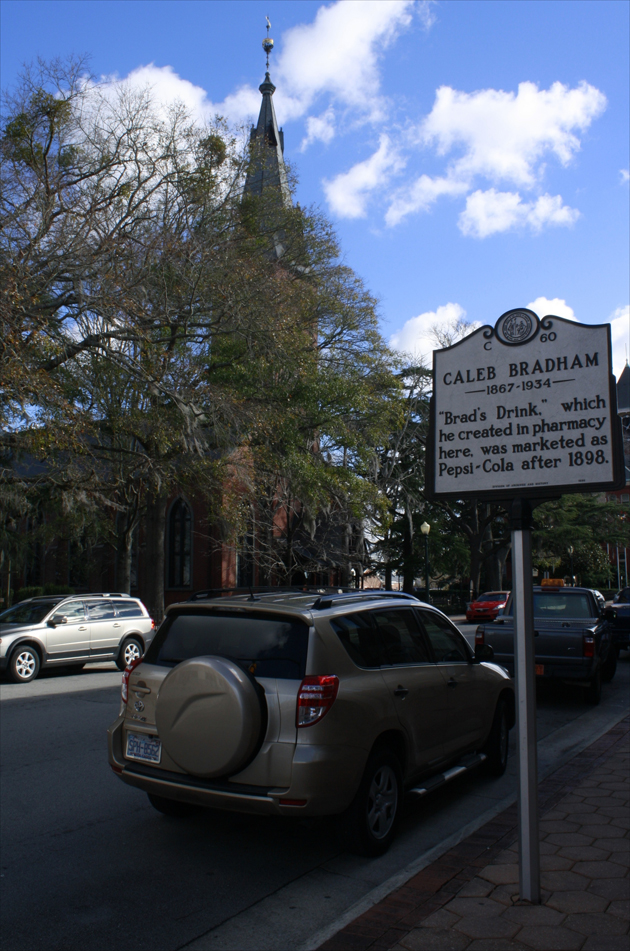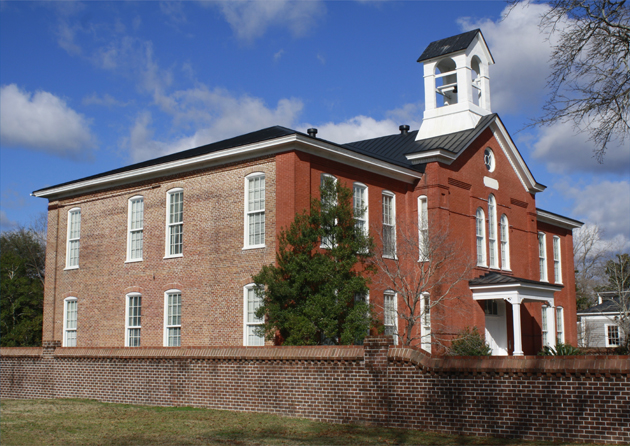Boldly Committed to Truth Telling in the False Face of Fakery
Craven County (1705)
Publisher's note: We believe the subject of history makes people (i.e., American people) smarter, so in our quest to educate others, we will provide excerpts from the North Carolina History Project, an online publication of the John Locke Foundation. This sixty-fourth installment, was originally posted, by Jonathan Martin in the North Carolina History Project.
Various towns and tributaries are located throughout Craven County. The Catfish Lake, Palmetto Swamp, and the Neuse River are a few important bodies of water in the region. New Bern, the county's seat of government, was founded in the early eighteenth century several years after Craven's establishment. Vanceboro, Cove City, Dover, and Havelock are other townships in Craven County.
Originally a part of Bath County, Craven was annexed in 1712, and named after one of the Carolina Lord Proprietors, the Earl of Craven. New Bern was named after Bern, Switzerland and founded by the Swiss Baron Christoph von Graffenried in 1710. After its incorporation in 1723, New Bern served as the capital of North Carolina until Raleigh became the permanent government center in the late eighteenth century. After several delays by the British Crown, the colonial government voted to establish New Bern the capital in 1766, and Tyron Palace (William Tryon's mansion) was soon erected in the city. Once the Revolutionary War was over, the General Assembly met throughout North Carolina, and the legislature finally agreed to make Raleigh the permanent state capital in 1788.

Tryon Palace, in New Bern, North Carolina, in early January, 2013: Above. The plaque giving a short history of the good Baron down on New Bern's waterfront on the Neuse River: Below. photos by Stan Deatherage Click on the image to expand to as much as 1000 pixels wide.

The popular and heavily visited Tryon Palace Historic Site remains the prime historical attraction in Craven County. Constructed in 1770 by the English architect John Hawks, Tryon Palace exhibited a Georgian style and according to historian William Powell, the mansion was "the finest government house in the colonies." The palace originally served as the home to the royal governors, William Tryon and Josiah Martin and their families. However, the revolution in the colonies caused conflict and disarray in the Tryon Palace, and the royal governors fled North Carolina. Richard Caswell and other governors, Abner Nash, Alexander Martin, and Richard D. Spaight, all resided in the Tryon Palace, but when Raleigh became the new capital, the mansion started to deteriorate. In 1945, the Tryon Palace Commission developed plans to renovate the structure and in 1959 the palace became a historic museum. In addition to the Tryon Palace, the James Riggs House (c. 1830), the Harvey Mansion (1798), and the St John's Masonic Lodge and Theater (1801) are other historic places in Craven.

The Caleb Bradham plaque in New Bern, North Carolina on Pollock Street wiht Christ Episcopal Church in the backgroud: Above. New Bern's City Hall also on Pollock Street: Below. photos by Stan Deatherage Click on the image to expand to as much as 1000 pixels wide.

In the late nineteenth century, Caleb Bradham invented the famous Pepsi-Cola soda drink in a pharmacy in New Bern. After graduating from the University of Maryland, Bradham opened a pharmacy in Craven County, and he enjoyed developing new soda drink flavors for his customers. Bradham completed his masterpiece soda, "Brad's Drink" or later dubbed "Pep-Kola", in the 1890s, and he started the Pepsi-Cola Company in 1902. Bradham became wealthy due to his drink's popularity, but he was left bankrupt after sugar prices increased during the first World War. He sold the company in 1923 to an investment group in Richmond, and after switching over to four other owners, Pepsi-Cola began its upward climb in the early 1930s. Presently, PepsiCo, a conglomerate that includes Frito-Lay snack foods, Tropicana, and Quaker Oats, is a multi-billion dollar corporation, and its stocks are traded on the New York Stock Exchange.
Craven County was home to the first newspaper and charter school in North Carolina. In 1751, the North-Carolina Gazette was produced in New Bern by James Davis. In desperate need for a newspaper, the North Carolina colonists had long relied on the Virginia Gazette for news, and James Davis was commissioned to start the state's first print newspaper. The North-Carolina Gazette was largely concerned with international issues and news, and after several publication suspensions, the Gazette's final issue was in September of 1784.
New Bern Academy, established in 1764, became the first charter school in North Carolina. Although it was not the state's first public school, New Bern Academy was a leading institution in the North Carolina colony and some of its students included William Gaston, Richard D. Spaight Jr., and Francis L. Hawks. Governor William Tryon described the institution as "the first [school] established in this province by legislative authority." The school became a Union hospital during the Civil War, and the New Bern public school system incorporated the academy in 1899. Today, the Tryon Palace manages tours of the New Bern Academy.

The New Bern Academy from various angles: Above and below. photos by Stan Deatherage Click on the image to expand to as much as 1000 pixels wide.

The New Bern Civic Theater, Union Point Park, Fireman's Museum, the Atlantic Dance Theater, and Craven Concerts are the cultural entertainment and learning centers in Craven County. In addition to its cultural institutions, Craven presents several annual festivals including the North Carolina Festival, the Festival of Colonial Life, the Chrysanthemum Festival, and the Bridgeton Blueberry Festival.
Sources:
"Craven County; Capitals, Colonial and State; Tryon Palace; North-Carolina Gazette." William S. Powell, ed. Encyclopedia of North Carolina (University of North Carolina Press: Chapel Hill, NC 2006).
"Craven County History." Craven County government website. http://www.cravencounty.com/admin/history.cfm, (accessed November 25, 2011).
"Tryon Palace; Caleb Bradham; New Bern Academy." North Carolina Highway Historical Marker Program website. A Division of the North Carolina Department of Cultural Resources. (accessed November 25, 2011)
Go Back
Various towns and tributaries are located throughout Craven County. The Catfish Lake, Palmetto Swamp, and the Neuse River are a few important bodies of water in the region. New Bern, the county's seat of government, was founded in the early eighteenth century several years after Craven's establishment. Vanceboro, Cove City, Dover, and Havelock are other townships in Craven County.
Originally a part of Bath County, Craven was annexed in 1712, and named after one of the Carolina Lord Proprietors, the Earl of Craven. New Bern was named after Bern, Switzerland and founded by the Swiss Baron Christoph von Graffenried in 1710. After its incorporation in 1723, New Bern served as the capital of North Carolina until Raleigh became the permanent government center in the late eighteenth century. After several delays by the British Crown, the colonial government voted to establish New Bern the capital in 1766, and Tyron Palace (William Tryon's mansion) was soon erected in the city. Once the Revolutionary War was over, the General Assembly met throughout North Carolina, and the legislature finally agreed to make Raleigh the permanent state capital in 1788.


The popular and heavily visited Tryon Palace Historic Site remains the prime historical attraction in Craven County. Constructed in 1770 by the English architect John Hawks, Tryon Palace exhibited a Georgian style and according to historian William Powell, the mansion was "the finest government house in the colonies." The palace originally served as the home to the royal governors, William Tryon and Josiah Martin and their families. However, the revolution in the colonies caused conflict and disarray in the Tryon Palace, and the royal governors fled North Carolina. Richard Caswell and other governors, Abner Nash, Alexander Martin, and Richard D. Spaight, all resided in the Tryon Palace, but when Raleigh became the new capital, the mansion started to deteriorate. In 1945, the Tryon Palace Commission developed plans to renovate the structure and in 1959 the palace became a historic museum. In addition to the Tryon Palace, the James Riggs House (c. 1830), the Harvey Mansion (1798), and the St John's Masonic Lodge and Theater (1801) are other historic places in Craven.


In the late nineteenth century, Caleb Bradham invented the famous Pepsi-Cola soda drink in a pharmacy in New Bern. After graduating from the University of Maryland, Bradham opened a pharmacy in Craven County, and he enjoyed developing new soda drink flavors for his customers. Bradham completed his masterpiece soda, "Brad's Drink" or later dubbed "Pep-Kola", in the 1890s, and he started the Pepsi-Cola Company in 1902. Bradham became wealthy due to his drink's popularity, but he was left bankrupt after sugar prices increased during the first World War. He sold the company in 1923 to an investment group in Richmond, and after switching over to four other owners, Pepsi-Cola began its upward climb in the early 1930s. Presently, PepsiCo, a conglomerate that includes Frito-Lay snack foods, Tropicana, and Quaker Oats, is a multi-billion dollar corporation, and its stocks are traded on the New York Stock Exchange.
Craven County was home to the first newspaper and charter school in North Carolina. In 1751, the North-Carolina Gazette was produced in New Bern by James Davis. In desperate need for a newspaper, the North Carolina colonists had long relied on the Virginia Gazette for news, and James Davis was commissioned to start the state's first print newspaper. The North-Carolina Gazette was largely concerned with international issues and news, and after several publication suspensions, the Gazette's final issue was in September of 1784.
New Bern Academy, established in 1764, became the first charter school in North Carolina. Although it was not the state's first public school, New Bern Academy was a leading institution in the North Carolina colony and some of its students included William Gaston, Richard D. Spaight Jr., and Francis L. Hawks. Governor William Tryon described the institution as "the first [school] established in this province by legislative authority." The school became a Union hospital during the Civil War, and the New Bern public school system incorporated the academy in 1899. Today, the Tryon Palace manages tours of the New Bern Academy.


The New Bern Civic Theater, Union Point Park, Fireman's Museum, the Atlantic Dance Theater, and Craven Concerts are the cultural entertainment and learning centers in Craven County. In addition to its cultural institutions, Craven presents several annual festivals including the North Carolina Festival, the Festival of Colonial Life, the Chrysanthemum Festival, and the Bridgeton Blueberry Festival.
Sources:
"Craven County; Capitals, Colonial and State; Tryon Palace; North-Carolina Gazette." William S. Powell, ed. Encyclopedia of North Carolina (University of North Carolina Press: Chapel Hill, NC 2006).
"Craven County History." Craven County government website. http://www.cravencounty.com/admin/history.cfm, (accessed November 25, 2011).
"Tryon Palace; Caleb Bradham; New Bern Academy." North Carolina Highway Historical Marker Program website. A Division of the North Carolina Department of Cultural Resources. (accessed November 25, 2011)
| Vidant Endocrinology - Greenville joins network of care | NC Past, In the Past, Body & Soul | The Marion L. Shepard Cancer Center Announces July Programs for Cancer Patients, Survivors and Caregivers |





















